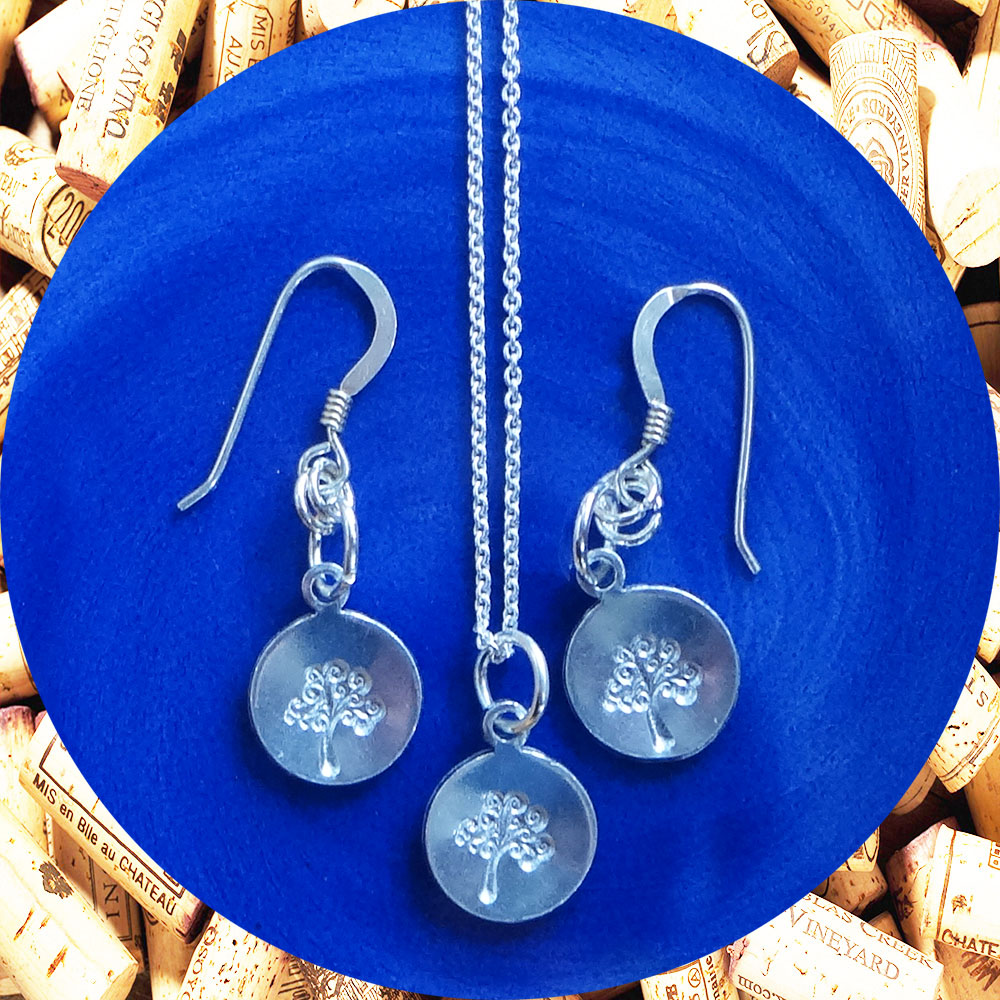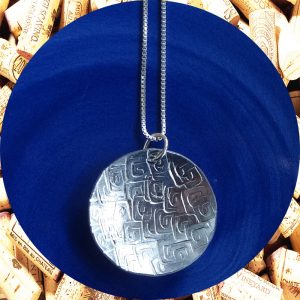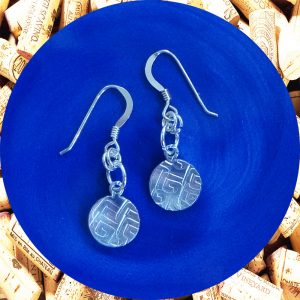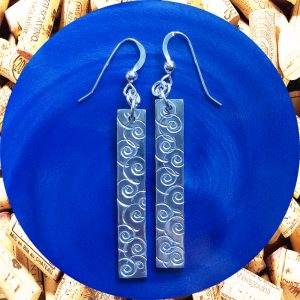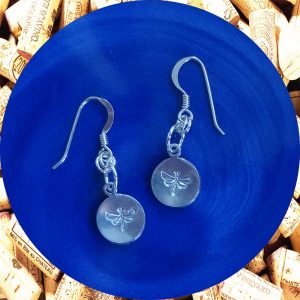Tree of Life Print Aluminum Earrings and Necklace Set
$40.00
Tree of Life Print Aluminum Earrings and Necklace Set (Small Round) are composed of lightweight premium aluminum, giving the look of sterling silver without tarnishing. Choose a 16″ or 18″ inch chain.
Description
- Small Round Tree of Life Print Aluminum Earrings and Necklace Set are 9.5 mm in diameter and are composed of Premium Aluminum.
- A magical Tree of Life print adorns these handcrafted gems.
- The tree of life means a great many things to many people around the world:
- Celts believed humans came from trees, they viewed them not only as living beings but also as magical. Trees were guardians of the land and acted as a doorway to the spirit world. The Tree of Life provided food, warmth, and shelter. The Tree of Life symbolized strength, wisdom, and longevity.
- Mayans believed a world tree connected Heaven, Earth, and the Underworld and grew at the point of creation. Everything flowed out from that spot in four directions. On the Mayan Tree of Life, there is a cross in the centre which is the source of all creation.
- Ancient Egyptians believed that the Tree of Life was the place where life and death were enclosed. East was the direction of life whereas West was the direction of death and the underworld. In Egyptian Mythology, Isis and Osiris (also known as ‘the first couple’) emerged from the Tree of Life.
- Christians believed the Tree of Life was the tree of the knowledge, of good and evil which was planted in the Garden of Eden.
- China Taoists a magical peach tree that only produces a peach ever 3,000 years. The individual who happens to eat this fruit becomes immortal. There is a dragon at the base of this Tree of Life and a phoenix on top.
- Extremely lightweight, durable, and with the added benefit of a non-tarnish surface.
- Each Pendant is suspended on a light oval cable Italian Sterling Silver chain.
- The chain is available in 16 inches or 18 inches at no extra cost, just choose which you would like
- The ear wire is a sterling silver flat fishhook (shepherd hook) with an open loop.
- Kimi Designs also offers a pair of plastic backs with each pair.
- These beauties should give you years and years of magical wear.
Discovery of Aluminum by Dr. Doug Stewart
People have used alum since ancient times for dyeing, tanning and to stop bleeding. Alum is potassium aluminum sulfate.
In the 1750s German chemist Andreas Marggraf found he could use an alkali solution to precipitate a new substance from alum. Marggraf had previously been the first person to isolate zinc in 1746.
The substance Marggraf obtained from alum was named alumina by French chemist Louis de Morveau in 1760. We now know that alumina is aluminum oxide – chemical formula Al2O3.
De Morveau believed alumina contained a new metallic element, but, like Marggraf, he was unable to extract this metal from its oxide.
In 1807 or 1808, English chemist Humphry Davy decomposed alumina in an electric arc to obtain a metal. The metal was not pure aluminum, but an alloy of aluminum and iron.
Davy called the new metal alumium, then renamed it aluminum.
Aluminum was first isolated in 1825 by Hans Christian Ørsted (Oersted) in Copenhagen, Denmark who reported, “a lump of metal which in color and luster somewhat resembles tin.”
Ørsted produced aluminum by reducing aluminum chloride using a potassium-mercury amalgam. The mercury was removed by heating to leave aluminum.
German chemist Friedrich Wöhler (Woehler) repeated Ørsted’s experiment but found it yielded only potassium metal. Wöhler developed the method further two years later, reacting volatalized aluminum trichloride with potassium to produce small amounts of aluminum. (1)
In 1856 Berzelius stated that it was Wöhler who had succeeded in 1827. Wöhler is therefore usually given credit for the discovery.
More recently, Fogh repeated the original experiments and has shown that Ørsted’s method can give satisfactory results.
This has strengthened the priority of Ørsted’s original work and his position as discoverer of aluminum.
For almost three decades, aluminum remained a novelty, expensive to produce and more valuable than gold, until in 1854 Henri Saint-Claire Deville in Paris, France found a way of replacing potassium with much cheaper sodium in the reaction to isolate aluminum. Aluminum then became more popular but, because it was still quite expensive, was used in ornamental rather than practical situations.
Finally, in 1886 American chemist Charles Martin Hall and French chemist Paul Héroult independently invented the Hall-Héroult process, which inexpensively isolates aluminum metal from its oxide electrolytically.
Aluminum is still manufactured using the Hall-Héroult process today.
Classification: Aluminum is an ‘other metal’
Color: silvery
Atomic weight: 26.98154 g/mol
State: solid
Melting point: 660.32 oC, 933.57 K
Boiling point: 2466.85 oC, 2740.00 K
Electrons: 13
Protons: 13
Neutrons in most abundant isotope: 14
Electron shells: 2,8,3
Electron configuration: 1s2 2s2 2p6 3s2 3p1
Density @ 20oC: 2.702 g/cm3
Additional information
| Chain Length | 16", 18" |
|---|

